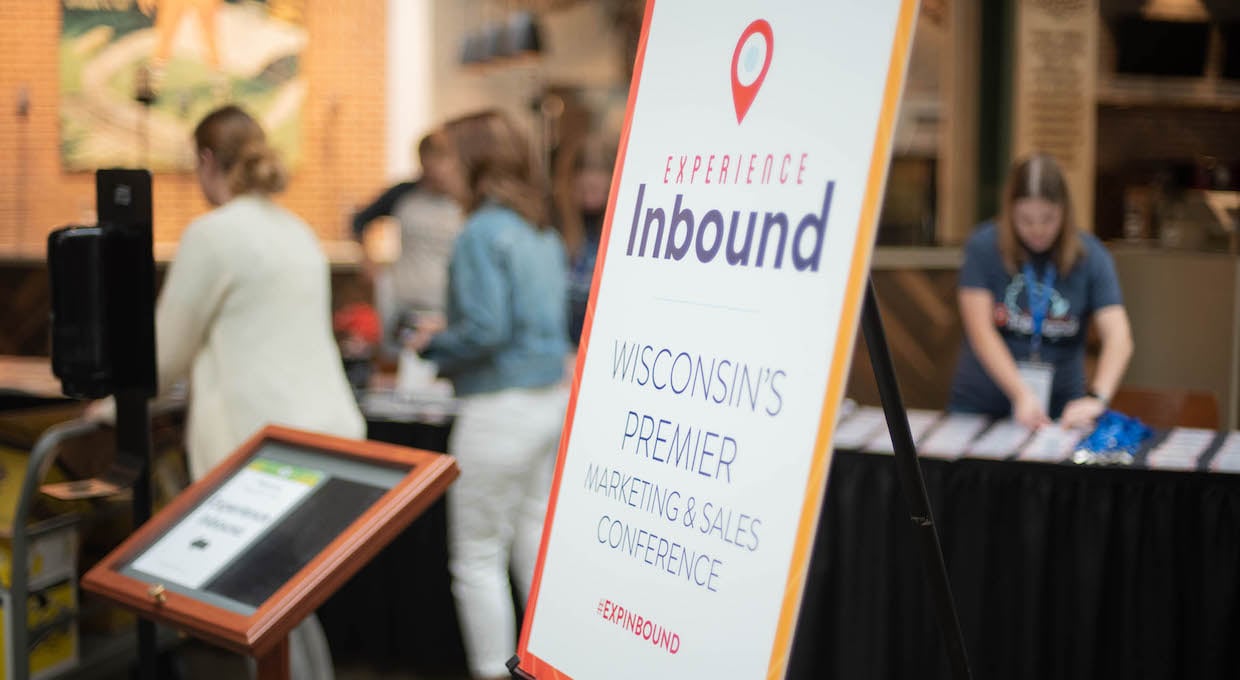7 Steps to Start a Complete and Powerful Inbound Marketing Program
Written by
You know a thing or two about inbound marketing. After all, you saw this blog’s title, clicked, and began reading.
That doesn’t mean that you’re an expert; no shame in that. Inbound — especially for B2Bs — is a unique beast that takes time and effort to master. If getting started with inbound marketing for complex industrials is your goal, you’re in the right place.
There’s an art — and plenty of science — to inbound marketing, which raises many questions. What kind of work needs to be done to get an inbound program off the ground? What are the steps involved and who executes them?
How to implement inbound marketing may be the biggest and most intimidating. Even though you’ve probably done a fair amount of research, how are you supposed to know what to expect when it comes to implementation?
Time Out: If you’re not already familiar with the major aspects of inbound marketing, including specific terms and inbound philosophies, we recommend spending a few minutes reviewing our guide to Inbound Marketing For Industrials before you dive in today. Also take a quick look at this article on assessing your readiness for inbound marketing. OK, now you’re sold on inbound and ready to launch!
Let’s learn the 7 steps of getting started with inbound marketing:
- Take Inventory of Marketing Assets and Tactics
- Research and Create Target Personas
- Do Your SEO Research
- Set Your Marketing Strategy and Goals
- Update/Rework Your Website
- Publish and Share Content
- Measure and Improve
Remember two things: All of these steps involve time and effort (but they’re so worthwhile), and no two organizations are alike — adjustments need to be made throughout the journey for you to realize inbound marketing success.
1. Take Inventory of Marketing Assets & Tactics
This first action item is short and sweet, but so very important. Make a list of all of your past and current marketing efforts. Next, create a budget, including your team resources and tools (website CMS and hosting, marketing automation software, CRM, etc.).
As you assess, ask yourself questions such as, “Does our website nurture prospects so they learn about possible solutions to their challenges?” and “Does our website CMS, CRM, and marketing automation tools integrate with our marketing automation software?”
This audit helps you shift focus from knowing why to use inbound marketing — which you now likely understand — to knowing how to get your inbound marketing program off the ground.
2. Research & Create Target Personas
Everyone has an ideal customer — the kind you can’t get enough of. Define that company by being as granular as possible: “Company in the Midwest with high-volume plastic parts needs with budgets in excess of $400,000 annually, and with opportunities for penetration into their organizations and cross-sell.”
Now, within organizations that fit that description, differentiate the people who have influence in purchase decisions and those who actually make decisions. When you know your target(s), you’re able to create content (and publish it on your website) that is relevant, highly compelling, and speaks directly to their pains. That content gets found by search engines because what you’re writing about aligns with their searches.
List persona demographics (age, title, education, background, etc.) and then interview decision makers and influencers. Capture their industry roles as well as their values, fears, attitudes, aspirations, and/or biases. Lastly, identify how you can reduce friction and increase force (according to the flywheel methodology) to help smooth their conversion paths and buyer’s journey.
RELATED: Get our Free Guide to Developing Your Personas and Creating Content
3. Do Your SEO Research
Before you start writing, outline a strategy with primary messages to your different personas. Remember to include appropriate topics/pains so when they search, your content and solutions are found. Validate your assumptions about what they’re searching by using search engine optimization (SEO) tools to identify key phrases that you can create content around.
Your blog is your primary attraction method. It gets searchers onto your site where they learn more about you and find other content, such as ebooks, guides, and tipsheets that they can download. They can only download this “advanced” content if they give you their contact information, which makes them a lead. With the information they share, you can now nurture them with emails that offer additional, related content.
You should create content not just for every target persona, but for each stage in their buyer journeys, too. Are they just starting to explore how to solve a challenge? Or, are already comparing different solution options? Or, are they looking for a reason to pull the trigger? Each situation requires different types of messaging and SEO strategy around it.
4. Set Your Marketing Strategy & Goals
Bring your marketing and sales teams together so they’re on the same page about your ideal targets. Always keep two tactics in mind as you execute an inbound program:
- commit to specific processes (ongoing content creation and growth-driven website design cycles, for example), and
- use the proper marketing tools, such as marketing automation and analytics software.
Plus, work with an experienced inbound marketing firm familiar with your industry. Together, define the KPIs you’ll track in order to measure the success of your inbound marketing program.
This involves pinpointing your Customer Lifetime Value (CLV), or what your average customer is worth over the average life of a relationship. A CLV helps determine:
- How many new customers you’ll need to achieve your goals,
- How many leads you’ll need in order to reach those goals, and
- How many website visitors you’ll need in order to get that many leads, based on average conversion rates
5. Update/Rework Your Website
A crucial foundational step to implementing marketing inbound is optimizing your most powerful asset for lead generation: your website.
- Is it easy to navigate, intuitive, and informative?
- Is it built to convert traffic into leads?
- Are you ready to implement Growth-Driven Design (GDD), the modern way to develop and continuously improve an effective website?
Not just any old website can accommodate all you need to properly present to prospects. A website needs a blog, forms, and calls-to-action (CTAs), which are graphics/buttons that entice viewers to access advanced content.
Plus, there are things like thank you pages and email templates to nurture those who download content. Always keep in mind to offer conversion opportunities strategically throughout your site.
The SEO research you did for step #3 helps you target personas looking for solutions, and incorporates phrases naturally into content throughout the site.
6. Publish & Share Content
Share your brand with the world by developing, publishing, and promoting fresh, relevant content. Demonstrate your industry knowledge and show that you solve your personas’ problems.
Build an editorial calendar — including all sorts of interesting and valuable content that your best prospects want — and stick to it. Some searchers find content when they discover your blog, but you can boost the number of visits to your site and its content by promoting it on social media.
LinkedIn is a great place for your team to share links to blog posts and advanced content. For some companies, Facebook makes sense (mostly for recruiting-related content). Twitter is a great channel when you want B2B trade publications to pick up your content. YouTube is another high-value platform when you have video content to share.
7. Measure & Improve
Scrutinize the effectiveness of your website (and all of your inbound marketing tactics) regularly and implement discovered changes. Look to the list of KPIs (from step #4) for guidance. This is also the right time to refocus on the flywheel’s “attract,” “engage,” and “delight” metrics.
You’ll also want to get sales working with marketing by implementing a Service Level Agreement (SLA), which outlines the responsibilities each team has to the other. It gets everyone on the same page regarding goals and processes.
As these 7 steps show, getting started with inbound marketing is no joke. You need to be committed. Having a partner on which to lean is always helpful and comforting, so consider a professional marketing firm that knows inbound marketing inside and out.
So, you’re ready to get started with inbound marketing? Congrats! This 31-page guide is what you need next: A Step-By-Step Guide to Inbound Marketing. It’s a deep dive into the steps you just read about! Just click the link below to download your copy.
Subscribe To Our Blog
Information. Insights. Ideas. Get notified every time a new Weidert Group blog article is published – subscribe now!
You May Also Like...

Artificial Intelligence
AI Agents Are Here—How Smart Businesses Are Using Them Now

Inbound Marketing
Podcasting Playbook: What We Learned After 100 Days of Running a B2B Podcast

Weidert Group News
Experience Inbound 2025: What’s Working Now (and What’s Next)
Accelerate Your Growth with
Weidert Group
If you’re ready to explore a partnership, request a personalized consultation with our team.

